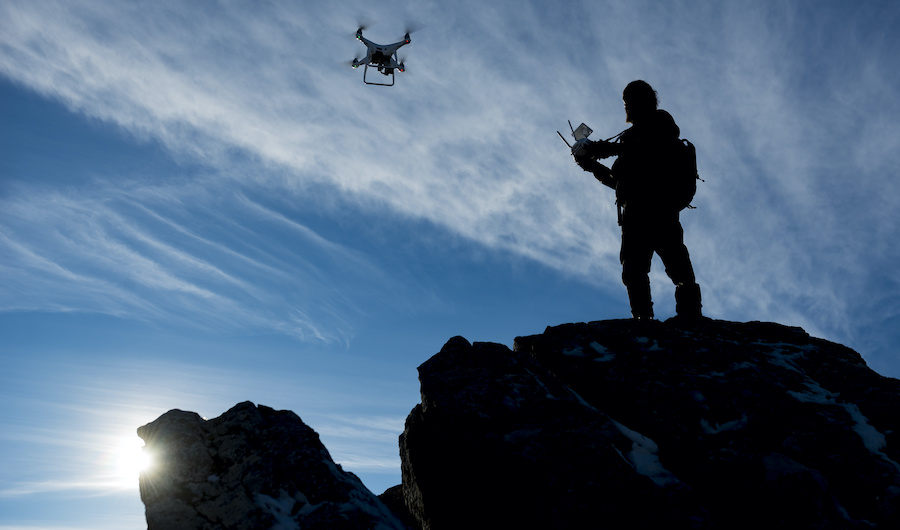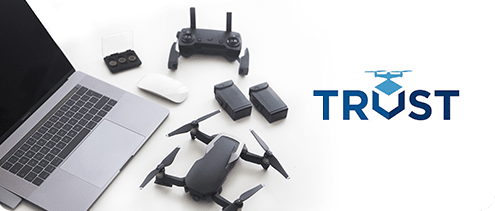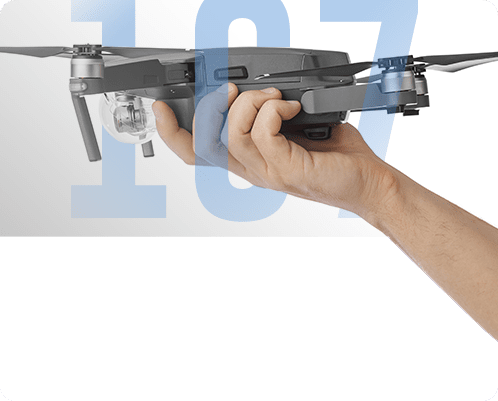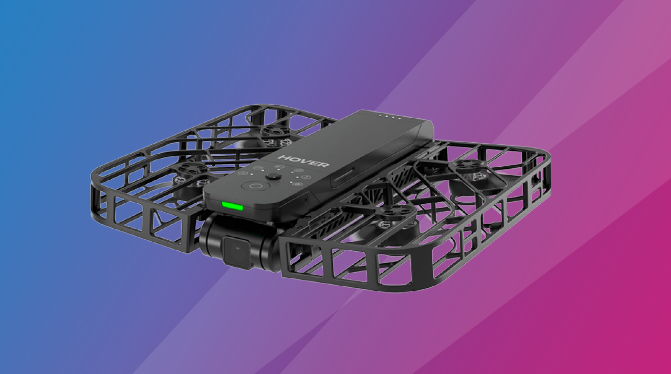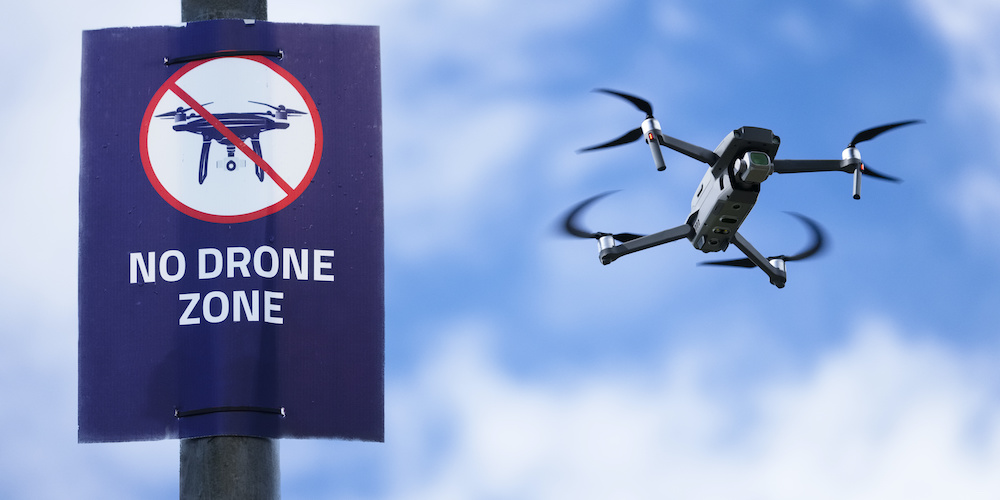-
Is drone training a requirement?
-
Knowledge of safety-related regulations
- Airspace restrictions
- Pre-flight inspection
- Situational awareness
- Other regulations
-
Advanced drone flight techniques
- Flying with a load
- American Manufacturer Freefly Talks New Product & Drone Ban - Matt Isenbarger - PiXL Drone Show #82
- Flying under different weather conditions
- Flying at night or over crowds
- Specialized drone applications
- Effective marketing tool
-
Final thoughts
One of the most appealing things about modern drones is that they’re incredibly easy to fly. Just about anyone with a minimal level of technical savvy can unbox a drone and get it flying in a matter of minutes. This ease of use factor has led to a lot of drone pilots not undertaking any sort of formal training.
The aversion towards training is natural. After all, it takes a bit of work, a lot of time, and usually fetches a hefty price. However, the growth of the drone training industry indicates that there are more and more pilots realizing the value that formal training provides. How important is drone training and should all drone pilots
Is drone training a requirement?
Yes, training is required for recreational drone pilots. In June of 2021, the FAA released The Recreational UAS Safety Test (TRUST).
Recreational drone pilots need to fly under flight restrictions as outlined in the FAA Reauthorization Act of 2018. These restrictions included yielding right of way to manned aircraft, flying only within visual line of sight, and flying below 400 AGL altitude among others. Even with a proposed certification test for recreational drone pilots, there is no provision in the law requiring any sort of training.
The rules for commercial drone pilots are a bit stricter. Aside from a longer list of flight restrictions, commercial drone pilots are required to take and pass a 60-item multiple-choice knowledge test to earn a Part 107 remote pilot certificate. Part 107 provides the legal framework for commercial drone operations in the US and the certificate is a requirement for all commercial drone pilots.
Although using a training program is not required, it will make it much easier to pass the exam. Pilot Institute offers the leading course for Part 107.
Despite the slightly advanced level of the Part 107 knowledge test, the FAA still does not require any sort of formal training for those who wish to take it. While formal training certainly helps, it’s not unusual to hear accounts of drone pilots who have managed to pass the test using only free reading materials.
All of this information brings us back to our original point – that there are currently no drone-specific laws that require drone pilots to receive any formal drone training. However, we find it hard to imagine any situation where formal training can be considered unproductive.
For commercial drone pilots, a training course that provides certification can give you an edge over your competitors. For those who are flying for fun, the added skills you can learn from training can certainly come in handy and can help you transition to commercial drone flight in the future.
Knowledge of safety-related regulations
More than any other flight skill, your ability to safely fly your drone should be the top priority. If it’s your first time flying a drone or to do anything related to aviation, you probably won’t be familiar with many safety standards the aviation professionals have learned and practiced through the years. For experienced drone pilots, these safety practices come as second nature. A formal drone training course, designed by an experienced instructor, will allow you to learn these standard practices and any FAA-imposed safety regulations. The following are just some of the sub-topics you can learn about in a drone training course:
Airspace restrictions
One of the most important aspects of airspace safety is knowing which areas are considered controlled airspace or restricted airspace. As their names imply, drone flight in controlled and restricted airspace is subject to varying levels of restrictions. This is either because of a high level of air traffic in these areas or unusual airspace activities like military training or artillery tests.
In some circumstances, airspace restrictions are established for reasons related to national security or safety. Examples include movement of the US President, disaster response, or massive crowd-drawing events. These conditions can be transient in nature, requiring drone pilots to stay up to date with information on airspace restrictions.
If you’ve never had to deal with matters related to aviation before, this is probably news to you. Unfortunately, close encounters between drones and manned aircraft take a vast majority of drone-related safety incidents. Education and compliance are the best ways to combat such safety issues, and we find that formal drone training courses are good places to start.
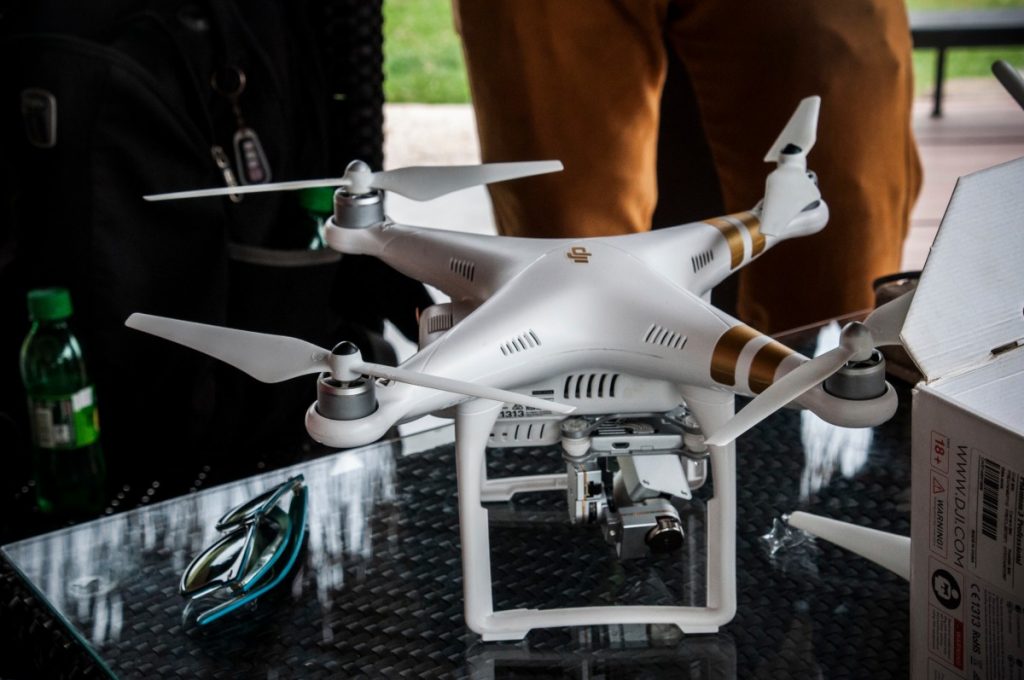
Pre-flight inspection
A crash is probably one of the biggest fears of any drone pilot. A crash on a hard surface from 100 feet up can easily result in cracked propellers, broken propeller arms, or dislodged electrical components. If you crash your drone on water, then there’s very little chance of you being able to use it again – that is if you can even recover it.
Aside from causing damage to your drone, a drone crash can potentially also cause injury to the people below or significant property damage. This put a great deal of liability on you as the drone pilot. If you’re not flying with insurance, the financial liability can easily cost you several thousand dollars.
More than the financial cost, you also need to consider the welfare of all the people and property that your drone is flying over.
In many cases, drone crashes occur because of circumstances that can be avoided by doing a pre-flight inspection. These conditions include a damaged or discharged battery, cracks on the propellers, a loose battery compartment, or damage on the body of the drone.
Doing a pre-flight inspection isn’t difficult, but most of these practices were developed after years of experience. A training course will teach you the finer points of inspecting your drone before you fly so that you can learn from the lessons that others have learned through failure.
Situational awareness
In aviation, situational awareness refers to knowing the potential hazards and obstacles in your surroundings. This can take the form of birds, trees, and cliffs or mountains. Land-based hazards should also be considered such as people on the ground, moving vehicles, or bodies of water.
In some cases, situational awareness requires knowing potential hazards that are beyond the scope of your visual line of sight. A good example is flying within the vicinity of controlled airspace. By checking with a drone flight planning app, you can ensure that you keep outside the boundaries of controlled airspace and do not risk violation of any flight restrictions.
Situational awareness is a vital component of airspace safety. It’s also a sense that you develop as you build up your drone flight experience. The FAA considers situational awareness to be so important that they recommend flying with a visual observer if you anticipate conditions that will prevent you from paying full attention to the drone.
The tough thing about situational awareness is that it can take some time to develop. A hand-on drone flight training course can speed up the process by having an instructor teaching you the proper scanning methods and the various apps and drone features you can use to enhance situational awareness. While there may not be a single set of responses appropriate to all circumstances you can encounter in the field, knowing the fundamentals can help you adapt to any situation.
Other regulations
If you’re flying under Part 107 rules, then you’re probably aware that there’s a longer list of restrictions you need to comply to. Part of the FAA’s objectives is to promote the growth of the commercial drone service sector, so they offer a bit of flexibility to licensed drone pilots. For instance, restrictions against flying a drone at night or over people can be waived upon request.
A potential snag in this scheme could come up if you’re a newbie drone pilot or have not had any specialized drone training. When requesting a waiver, the FAA will request information on the drone pilot including their level of expertise and any training completed. They will also require the applicant to list down any potential hazards of the operation and the corresponding mitigating measures.
The point is that the FAA requires a high level of skill for drone operators who request such waivers. Knowledge of mitigating measures also requires a deep level of understanding of drone flight performance and the existing technologies that can address common drone-related hazards. These lessons can be earned through formal drone training. The certifications you can get when you complete such training can also be instrumental in getting waiver requests granted.
Advanced drone flight techniques
Knowledge is crucial to drone flight, but certain skills can only be learned through practice. With hands-on drone training, both knowledge and practice can go hand-in-hand to help you pull off techniques that can be considered advanced.
Flying with a load
Drones with interchangeable payload capabilities are quite rare. Most prosumer drones come with fixed cameras and don’t have the lifting power for heavier payload options. The drones that allow for swapping of payloads are far more powerful and likely more expensive.
When a drone swaps its payload from something light to something heavy (or vice-versa), its flight performance also changes. Heavier payloads carry greater momentum, and this can affect the braking distance of a drone as well as its ability to change directions.
The critical angle that a drone makes when turning is something that a drone pilot needs to take note of – this drastically drops when carrying a heavier payload. Going over the critical angle for a specific load setup can lead to a disruption of the lift generated by the propellers and result in a crash.
When you’re out in the field, you do not have the luxury of checking a load versus critical angle graph, nor can you actually measure those angles. This is where experience comes into play. When you’ve flown enough flights using a particular drone, observing the drone’s movements and how it responds to the controls gives you a sort of “sixth sense” of how far you can take it.
Flying under different weather conditions
Theory should always be the foundation of practice. When it comes to flying under different weather conditions, knowledge of the theory of how it affects drone performance is the one thing you can back on. After all, it’s tough to simulate actual weather conditions even through the course of a drone flight training course.
Training should cover how various weather parameters like air pressure, temperature, and humidity can affect drone performance. Primarily, how much lift the drone’s propellers generate will vary based on these parameters. Variations in lift can alter how much load a drone can carry, how quickly it can gain altitude, its ground speed, and its ability to make turns. This can come in handy if you frequently take your drone on trips or if your professional drone services take you to remote areas.
Flying at night or over crowds
Under Part 107 rules, flying a drone at night or over crowds is normally prohibited. This is a safety-related issue. Flying a drone at night greatly diminishes a pilot’s situational awareness and flying over crowds introduces a much higher level of risk to the drone operations.
Drone flight at night is something that the FAA is actively trying to classify as “normal” so that drone pilots no longer need to request to waive its restriction. Still, this recommendation comes with the caveat that drone pilots need to undergo special training for flying at night and that these lessons become integrated into the Part 107 knowledge test.
One of the main issues of flying a drone at night is the tendency for pilots to suffer “night illusions.” These include a distorted sense of distance and the illusion of accelerated movement when there is none. These illusions are normal and knowing what they are allows drone pilots to respond to them safely.
Specialized drone applications
High-end drone applications require the use of equipment beyond the usual cameras that prosumer drones come with. These include the use of LiDAR sensors for high-precision mapping, thermal cameras for thermal imaging, and multispectral sensors for precision agriculture. Obviously, using such equipment will require specialized knowledge beyond just being able to fly a drone.
One other thing to consider is that companies requesting for high-end drone services will likely have you fly around high-value property like industrial equipment and agricultural farmland. These are also very expensive jobs. This means that they are unlikely to hire someone with no experience or does not have a certification for related training.
Companies that offer trainings for specialized drone use are not common, but there’s still a good number of options out there. These trainings should cover the science behind the technology, how to use the equipment, how to process the data, and how to make interpretations based off it.

Effective marketing tool
As we’ve said, formal training is not compulsory for commercial drone work. The easy entry into the field has been a huge incentive for aspiring professional drone pilots. According to the FAA, they have already granted more than a hundred thousand Part 107 remote pilot certificates as of 2020. While there are still a lot of job opportunities for drone pilots out there, it cannot be denied that the field has now become more competitive than ever.
With a higher level of competition has come a need to gain an edge over other drone pilots. Those with years of experience can charge premium rates and have amassed a solid history of satisfied clients. For those who have entered the industry a bit later, they may not be able to rely on their experience to market their services. Instead, finishing a certified training course from a reputable drone training organization may be a good proxy.
In this regard, we have to stress taking training courses from companies with excellent instructors and have a solid history of satisfied students. You would also want to take training courses that are as specialized as possible. A basic drone flight course isn’t going to cut it if you’re offering industrial inspection services.
More to the point, we suggest taking training courses that provide certification. A certificate is a tangible document that you can show off to potential clients as proof of your level of proficiency. It’s also a demonstration that you are dedicated to learning about drone operations, whether in terms of safety or particular aspects of drone operations.
Final thoughts
Paying for training might seem like an excessive measure from drone pilots who are only thinking of flying a drone for fun. However, it also cannot be denied that drones have been the subject of concerns over safety and privacy for years far beyond any device that has ever been considered a “toy.” With near-miss encounters of drones being spotted flying close to manned aircraft or crowds being reported almost daily, these concerns by the public seem well-founded.
If you plan on flying a drone regularly, then going through some training seems like the responsible thing to do. You don’t need to go through fancy an on-hands drone training course. A training course focused on safety and airspace regulations should be the bare minimum.
